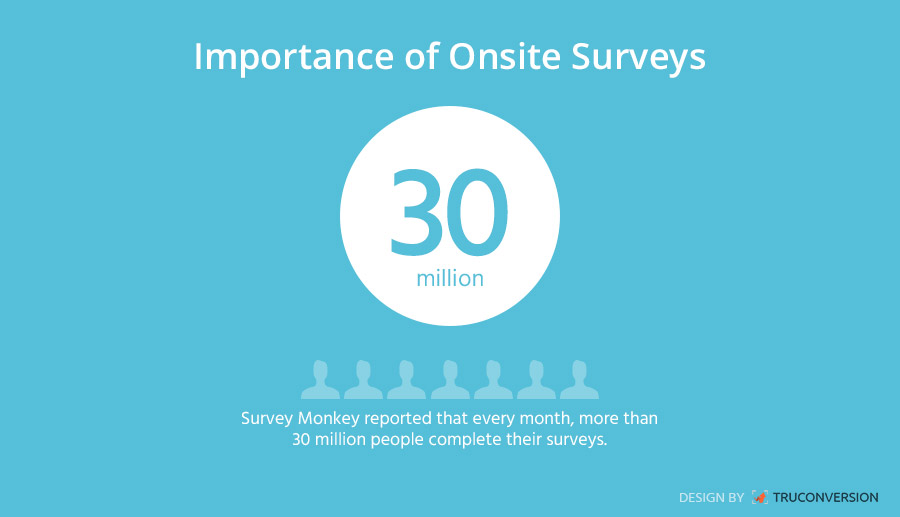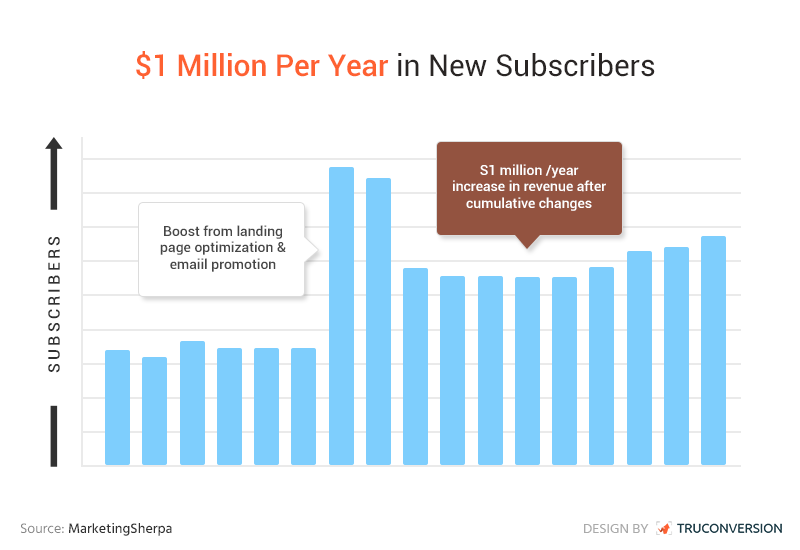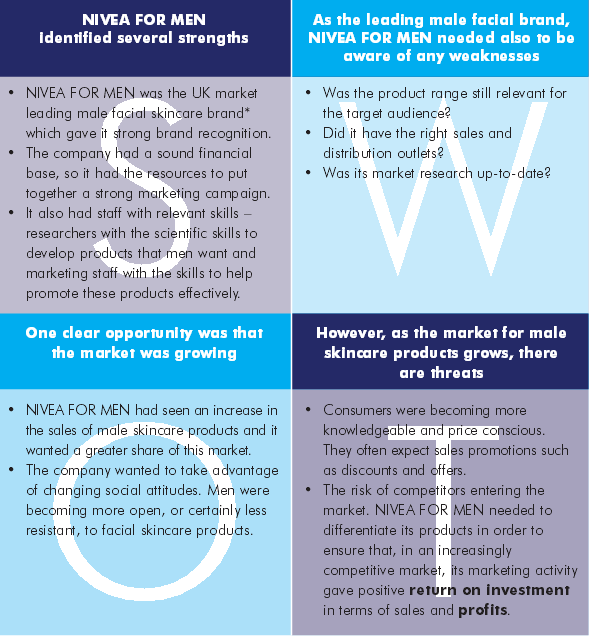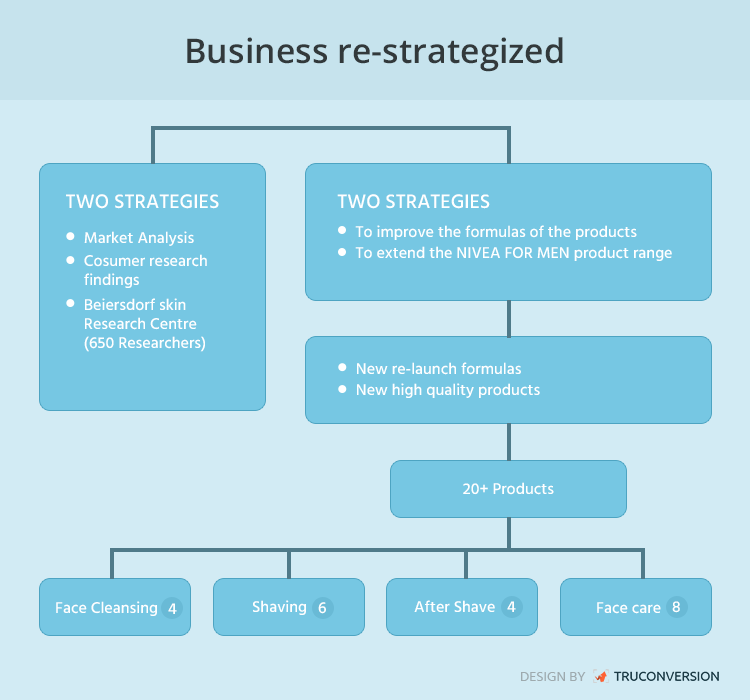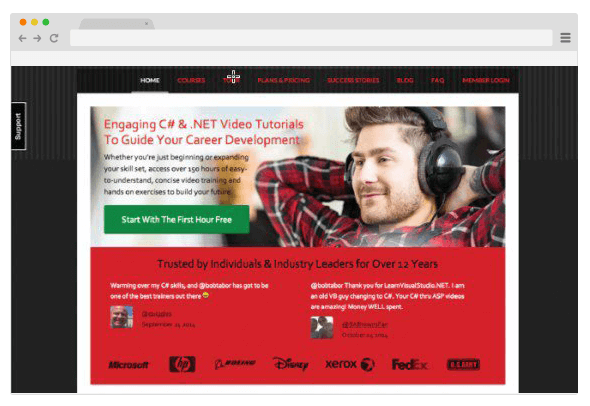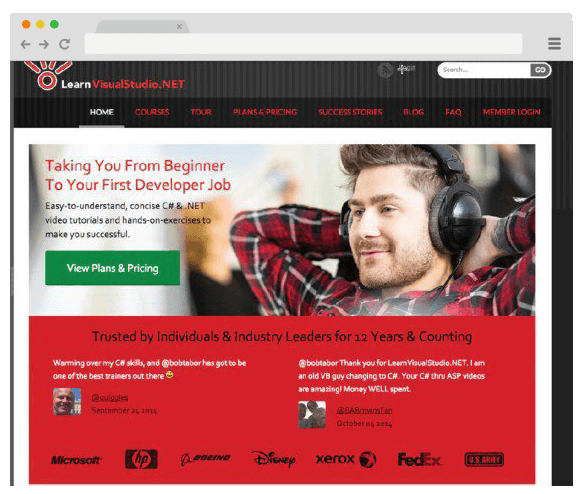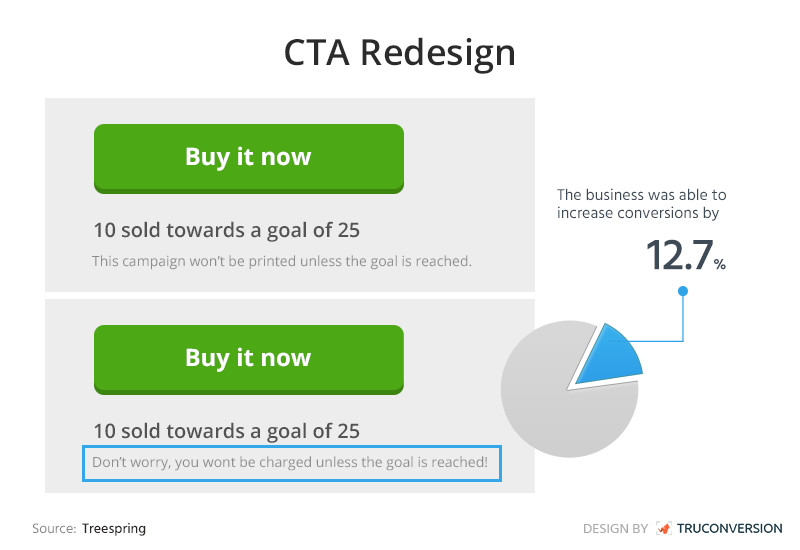Are you struggling with conversion? Tried every rule in the book and still feel like you are not yet there?
Well, I got you. I have taken time to write a post on something else that you could have not yet tried.
On-site surveys!
Do you know what they are? Why are they even important?
For starters, you need to understand that having a great sales plan and understanding your buyer influences are important aspects that help you convert. More so, know what to include in your survey.
In this post, I will teach you a few things.
- The Importance of a sales plan
- Understanding your customer buying influences
- Why onsite surveys are important
- 6 great tips on how to use onsite surveys and begin experiencing great conversion rates
Contents
The Importance Of A Sales Plan
Every business is run on objectives, the main aim being desirable results. This is why each of these businesses has a sales plan. Through this plan, the targeted market is identified and proper measures are put in place to ensure a high prospect-customer conversion rate.
An immaculate sales plan has excellent knowledge on the targeted market, ample research on the latest market trends and quality customer or prospect information. Most people tend to think that a sales plan is unquantifiable. On the contrary, there are several tools that can be used to measure a sales plan, giving credible forecast on how successful the plan might be.
First of all, having a successful marketing strategy depends on price analysis. According to Mick Hawes, CEO and co-founder of UncoverHiddenProfits (UHP) for example, increasing prices is the best way for businesses to increase profit. While this could be okay, you might be losing a lot focusing on such items yet they rarely convert.
Secondly, metrics analysis is very important.Businesses make a common mistake of taking time to sell items they consider as ‘hot’, without figuring out what made them fast-selling in the first place. A proper scrutiny of the factors contributing to a good sale has to be made.
Another important aspect is the customer service. More satisfied customers translate into more sales and more prospect-customer conversion rates. Ensure that your customer service providers are ever-smiling yet professional and friendly. This way, a customer feels safe transacting with your business.
Understanding Your Customer Buying Influences
In his book, Influence: The Psychology of Persuasion, Dr. Robert B. Cialdini discusses key principles into making others agree with you and use your service. This book discusses 6 key principles that any sales person must use to ensure that a buyer is influenced to make the purchase and remain a loyal customer.
Firstly, a buyer recognizes a problem. Secondly, before buying, a potential buyer has to do a research. This could simply involve remembering something that he or she has heard about the company. In case no useful information is found, the buyer resorts to conducting further research on the company. The outcome gives the buyer several alternatives.
Your prospects will also evaluate their choices. Additionally, every business considers a buying alternative. Most of the time, the alternative with the most advantages is considered. Buyers will also do a post-purchase evaluation to determine if they will become return customers or not.
Why Are Surveys Important In Light Of These
Feedback surveys are important when you need to create a viable sales plan and have in-depth understanding of your customers. They are the best way to figure things out as they will adequately collect required and relevant information from your customers and prospects.
This statistic clearly shows you the potential of onsite surveys in providing important client information and feedback.
So, how do you exactly use on-site surveys to increase conversion?
Dustin Drees, an optimization consultant, says that on-page surveys are great for instant feedback, making them perfect additions for pages in your conversion path that under-perform.
This statistic clearly shows you the potential of onsite surveys in providing important client information and feedback.
So, how do you exactly use on-site surveys to increase conversion?
Dustin Drees, an optimization consultant, says that on-page surveys are great for instant feedback, making them perfect additions for pages in your conversion path that underperform.
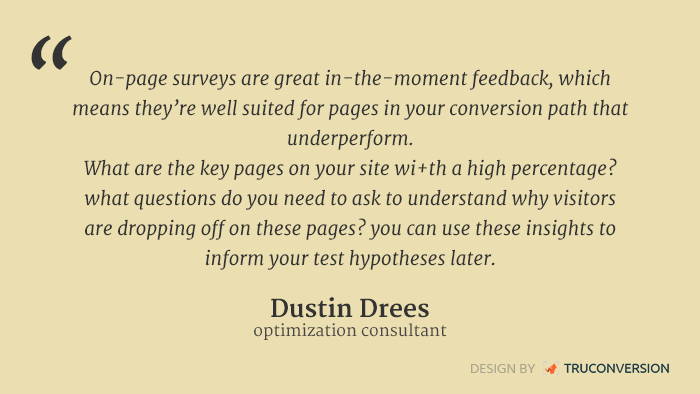
Ask Questions Your Traffic Will Find Relevant
One time, a VP of a fortune 500 company wanted advice on how to increase revenue on his website because the business was going for a three-month long peak selling season. The business needed the best move to make in order to make incredible sales.
After seeking some advice, the VP was advised to try using onsite surveys. But, the trick was not really on the idea but the execution. The business needed to ask relevant questions that would make the customer feel appreciated and at the same time, the business would understand key issues that people faced.
This was not the only business that tried to use onsite surveys by asking customers relevant questions. Moz, one of the largest online marketing software companies, used customer feedback from surveys to make changes in their business.
The result: A $1 million revenue increase.
In short, here is what they did:
They had 3 types of audiences that they are interested in. These were paying members, non-paying members and customers who had cancelled.
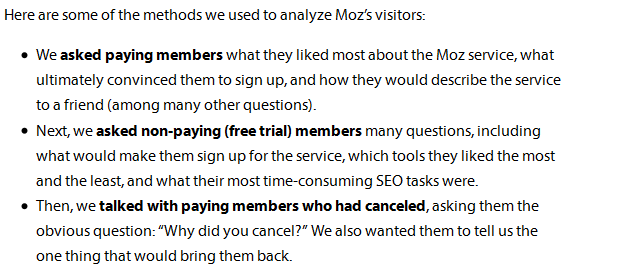
Have a look at what business analytics began to see:
Now that you have seen the success survey questions can bring, let me teach you a few relevant questions you should ask in your survey.
Question One: What Is The Purpose Of Your Visit?
This question can be framed in other ways such as ‘why are you here today?’, ‘ For what purposes have you used us before?’ or ‘ What’s the reason for your visit today?’
These questions will help you better understand the different reasons why people visit your website, and even prioritize these reasons.
Most of the time, even when you think that you clearly understand the theme of your website, you will not be sure what your site visitors really come to do. This is a critical piece of information that could help you re-strategize on your business.
For example:
Imagine having insane traffic but having a very low conversion rate. What would you think? There are consumers who actually visit high-end and expensive websites to get a few ideas then look for their desired products and services in cheaper places.
Honest answers from your traffic will sure help you decipher why your analytics sounds weird. When you see your visitor session recordings and places they visit, you get shocked that only a small proportion of the traffic actually converted. Onsite surveys will unravel the truth.
Let’s see how the Hilton hotel for example pulled this off:
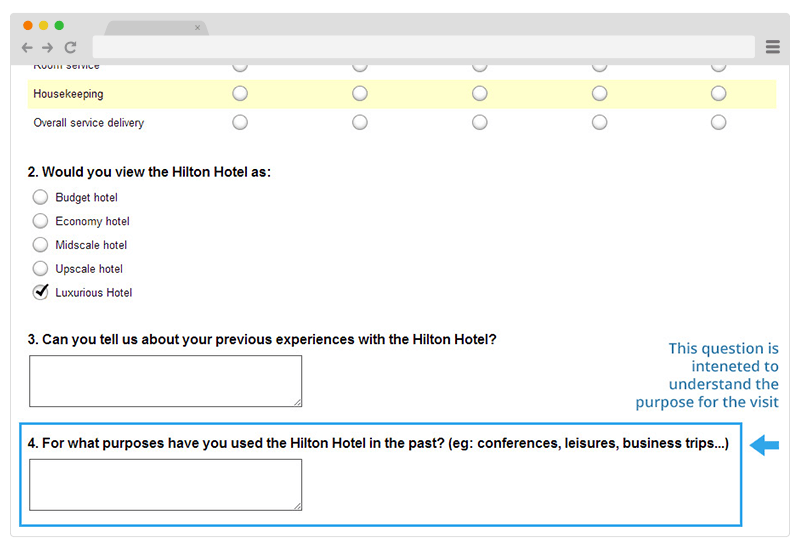
Question Two: Were You Able To Complete Your Task Today?
Here at Truconversion, we breathe conversion optimization every day. In addition to the numerous tips and tricks we offer, we also advocate for businesses allowing their traffic to self-report. This is because no matter how well you implement conversion rate optimization strategies, there is always room for improvement.
Can you see how Telstra.com allowed its visitors to self-report
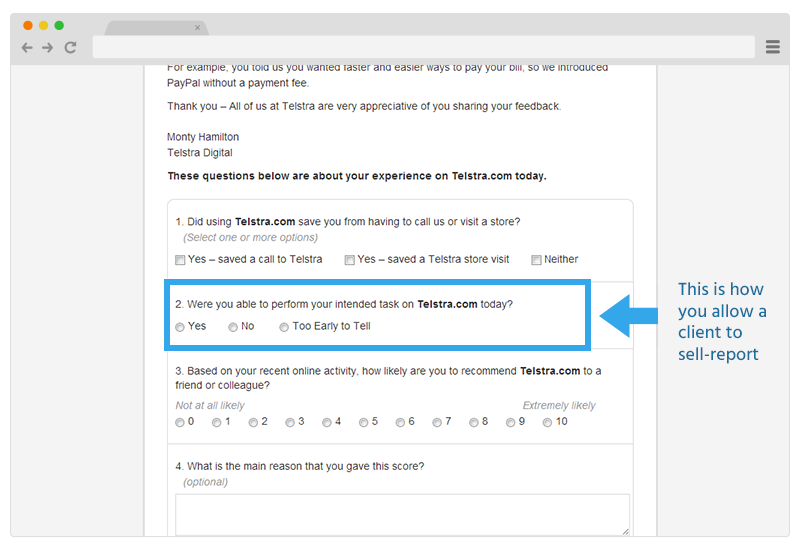
Your website users will best report on their user experience for example or the quality of your goods and services. They will give your business an idea on the exact perception they have on your website’s effectiveness in helping them complete their task.
Including this question in your onsite survey will eliminate the need for you to rely on mere hypothesis on why your visitors stayed on a particular page longer or left your website too soon.
Instead of assuming that your visitors found everything they were looking for, you give them a chance to report their frustrations and successes.
The result:
You will see an even better UX and customer satisfaction that will not only increase conversions but also increase revenue. Always remember that even if you invest in a massive million dollar website redesign, it is always important to get feedback from your clientele to know whether you efforts will yield the desired ROI.
Question Three: Why Weren’t You Able To Complete Your Task Today?
Again, this is also a question that allows your traffic toexpress their frustrations and disappointments on your website. Other ways of framing this question include ‘How can we improve our website to ensure that you complete your task next time?’ or ‘If you were unable to complete your task today please explain so that we make your experience better next time’.
The answer you will get after this question is what we call the voice of the customer. At this point, you want your customers to speak their mind therefore you should refrain from giving them drop down options.
Can you see how Telstra.com did this? Please notice that they however failed to perfectly do this. They should have included a follow up question that would allow the customer to report the reasons for their frustrations.
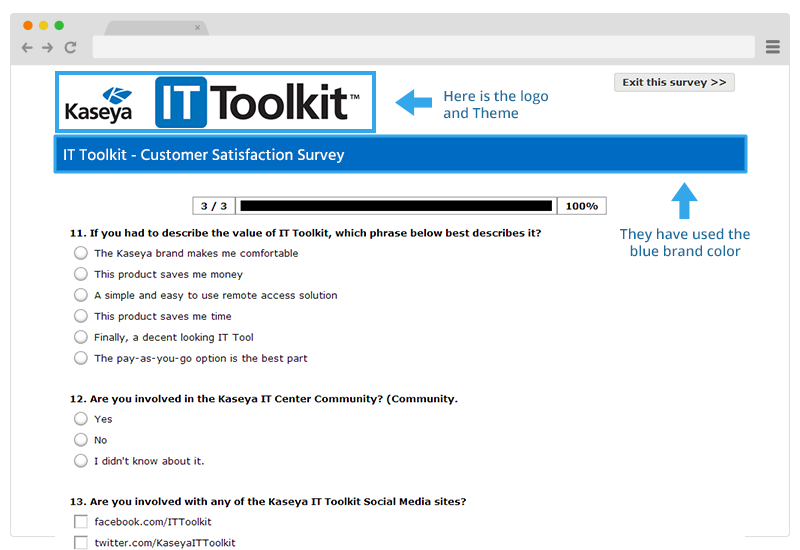
What if Telstra just wanted easy analtytics?
Yes we understand that it is easier to do an analysis based on predefined variables but this will not do your customers any good. Do you now the bad feeling when you visit FAQ sections of websites and you can’t find relevant information yet the business does not allow you to ask anyone?
This is the feeling you need to avoid in your business.Give your customers an open room to complain and have them give you feedback. After all, predefined answers do not give a third eye enough room to accurately point out your website’s problem.
A quick hack
You can also include answers but do it in a witty way that still allows your traffic to express itself. Suggestions such as Improve internal search, Update the navigation, and Provide more product information could be grouped in categories then blank boxes put under each category to allow your visitors to clearly define the problem.
When analyzing, all you need to do is categorize the responses based on common themes and rate the percentage of times each theme occurs in the customer feedback. This way, you will be able to prioritize your solutions especially when you are on a tight budget.
When prioritizing, remember that the most complained about issue is not always the one with the highest priority. Use your research and analysis techniques to pick the issues with the most grievous effects and deal with that first.
For example, a page that loads in more than 3 seconds is not as damaging as a complicated and confusing checkout page.
Why these questions are important:
For one, they are faster at offering consumer insights compared to waiting for analytics tools to crunch up the numbers for you. This however does not mean you shun web analytics tools. Obviously, you cannot survey everyone who visits your site. This is where analytics tools come in handy.
Here’s why:
Any visitor will be subject to the analysis therefore the analytics tool will provide insight on everyone as opposed to an onsite survey that will not necessarily cover everyone and if it does, it will not guarantee complete honesty from the respondents.
Best way forward:
It is simple. Just combine the two strategies.
Other than asking direct questions on customer experience, here are other questions you can ask your traffic to better understand your business. Please note that these are suggestions.
The best way to rate this and do a quick analysis is use a likert scale. Here are a few questions you could ask.
One: How likely are you to recommend us to a friend or colleague?
This is a net promoter question that is usually viewed to be deceptively useful. It is a management tool that businesses use to gauge the loyalty of customer relationships. People who respond with 9-10 for example are referred to as promoters and could potentially advertise your business.
To better do this, companies are advised to include open-ended questions.
Two: In the past six months, have you criticized or spoken highly of this business to a friend, colleague, or family member? If yes, please give details.
This is a very important question to ask because it gives your customers a chance to sift through their memory and find out specific criticism or praise they have ever uttered concerning your business. The beauty of this strategy is that the response could be turned into a testimonial.
Three: What Would You Want Us To Custom-Make For You?
Your marketing team is obviously scratching its head and sitting through a series of meetings just to figure out which new products to introduce to the market. While this is great, there is an even faster and better way of doing this, have an onsite survey that would ask your customers to indicate what they would like.
You will be shocked to find out that these people are a great source of ideas for new products. They would even recommended better adjustments to your existing products and in turn help you convert better.
Four: What Other Services or Products Should We Offer?
Your customers sure know what the difference between your business and your competition is and there is no better way of finding out what makes the difference than asking this insightful question to your traffic.
The Nivea case study:
In 1980, Nivea introduced a new grooming concept to men all around the world. The company mostly dealt with women products and now decided to venture into the male market. At that time, most of the after-shave products by different companies had alcohol content, which actually irritated the skin.
What Nivea did:
The company decided to manufacture alcohol-free after shave cream which was widely accepted in the market due to its gentle nature. By 1993, Nivea had included a wider range of men products in the market. By 2008, the men market was even bigger, causing Nivea to re-launch and introduce more products.
To strategize better, the companyconducted market research where consumers also had a chance to state what more products they needed to have from Nivea. Consumer feedback greatly influenced product innovation where new products were added to the market and existing products were reformulated.
Here is what their SWOT analysis looked like:
The results:
Currently, Nivea for Men is a market leader in many countries, with an international growth of 20%. The company has also maintained a high positive perception from consumers after being voted the best skincare range winner in the FHM grooming awards.
Here is how the business re-strategized to get amazing results:
Five: How Would You Describe This Business To A Friend?
This is where your business gets to understand the exact adjectives customers use to describe it. This information could come in handy when designing the landing page. To get better information, you could ask your customers to state which other options they would consider before transacting with you.
While you do this, ask them to describe why they think the other option is a good one. In addition to that, let them tell you exactly why they chose you as opposed to your competition. Again, this is also a great source of testimonials.
These questions are very necessary before you spend any money on a rebranding exercise. This is mainly because, understanding your client perceptions will help you to accurately map out your position in the market and in turn strategize better on how to increase your market share.
Six: Do You Use Our Business For All Your Product Needs?
Well, this is a great question to ask, do you know why? If you sell or offer complementary goods or services, you will need to know whether your clients use all your range of products. If not, you need to know why they prefer your competition for that particular product.
While you ask this question, always ensure that you do not instead direct them to your competition. It is therefore wise to instead ask this question to a fraction of your customers. Sometimes, questions serve as sources of information. So, be careful with some of the questions you ask.
This is a great alternative:
Ask them to state what persuades them to buy from you. This will save you a lot of trial and error while you eliminate the possibility of directing your respondents to a competitor. To get more information, you can ask your respondents to speak on behalf of their friends or colleagues.
You could ask your respondents to state reasons why their friends or other relations prefer other businesses to yours. Additionally, ask them what they would do to persuade them to begin using your business. Their answers will give you great insight on how to approach prospects.
Please note:
Don’t ask too many questions at once. Customers tend to get annoyed by long survey questions and will most of the time abandon them. To successfully do this, ensure that you analyze all your questions and prioritize them by including the most valuable ones in the survey.
It is advisable to limit your questions between 5 and 10 and if you need to ask more questions, you can create multiple surveys.
Here is how a company used a survey to better present their business:
When doing a conversion research for LearnVisualStudio.NET, Jen Havice and Dustin Drees, discovered that over 60% of the respondents considered themselves beginners and 69.74% of the respondents said that they were more interested in finding their first developer job.
These insights were used to develop a basic copy experiment.
The original
The Variation
By modifying the copy and telling visitors who the lessons are designed for and where to get them, conversions significantly increased– courses by 9.2%, plans and pricing by a whopping 24% and curriculum by 23.9%.
Use Survey Tools to Create Onsite Surveys
For website owners, Google Feedback Surveys, survey monkey and Qualroo are a few of the survey tools that can be used to conduct onsite surveys. We will briefly look at two of these survey tools and how to incorporate them in your site.
Survey monkey is a great application that that you can use for free or pay for an upgrade to conduct onsite surveys. Although this is an independent application in its own website, you can embed the survey on your website and seamlessly run it in your site.
In addition to that, you can also link the survey through email marketing and social media marketing avenues. For a better feel and look while promoting your brand, survey monkey has been designed to allow users to custom-make their questionnaires to suit your business’s look and feel.
Why this is an advantage:
A survey that matches your overall identity helps you better attract your right target market and also keep them glued to your site. Elements such as your logo, colors and themes will help boost your response rates.
Here is an example of how Kaseya used Survey monkey to retain its brand identity:
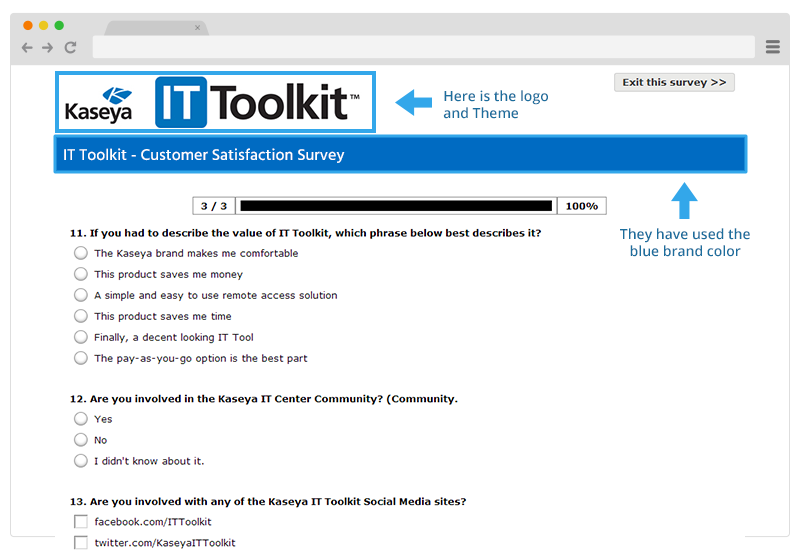
Let’s see how survey monkey helps you to custom make your survey:
You can match the questionnaire color scheme with that of your website, you can include as many relevant images as possible and also your company logo. To authenticate the questionnaire, you can also include your company name and official URL.
You can also create a personal thank-you note to all for your respondents once they complete the survey and use the opportunity to direct them to your site, most likely your landing page. Lastly, you can customize your survey URL to make it easy and simpler for your respondents to remember.
The beauty of survey monkey is its ability to offer great analytics that will help your business make data-driven decisions when making a sales plan for example. The responses are delivered real-time and the easy-to-use features will definitely help you create reports.
Example, The Nexonia case study:
Even with a robust and successful business, Nexonia needed to shape their product roadmap using customer survey, and the journey began with creating a survey monkey account. Prior to this, the business made decisions based on its own understanding of its clientele.
To revolutionize and increase conversions, the business looked to understand customer feedback. According to Neil Wainwright, co-founder, the business sent customers a mobile app survey and got hundreds of responses and a high response rate.
Here is what he said as quoted in the case study:
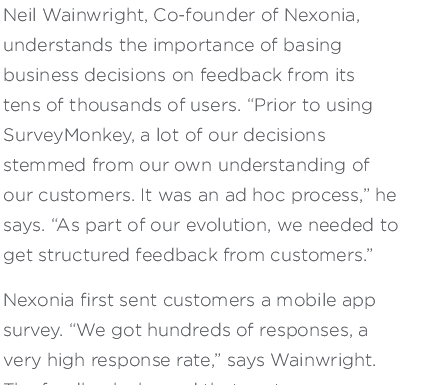
As a result, in less than 60 days, the business made a significant change and improvement on both their mobile and web platforms. In the end, the business was able to add more functionality in their mobile app.
In a bid to create the best user experience and boost their conversion rates, brands such as Mercedez Benz, Monster and Cox have used iPerceptions to design onsite questionnaires. iPerceptions uses the 4Q framework that is designed to evaluate your site visitor’s experience and level of satisfaction.
Ultimately, this information is used to implement website improvements as suggested by the respondents and as a result, create a better UX. The 4Q framework basically strives to seek questions to 4 pertinent answers.
Who has visited your website, why have they visited, how the experience can be and what can the business do to make the business better. This survey application can be implemented in your site using java script and you need not rewrite the code.
It gets better:
The application easily works with Google analytics, which integrates seamlessly with the Truconversion analytics tool. This means that Truconversion analytics tools can still give you the true picture of your website visitors even when used alongside survey tools.
Here is an image of iPerceptions analytics page:
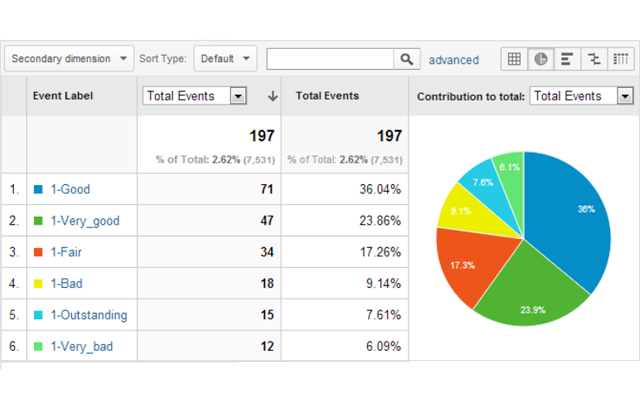
Keep Onsite Surveys Simple
The first rule of surveying is keeping it simple.
Do you know why?
You are dealing with people who are busy or just want to dedicate their time to something more interesting than your survey. If you want people to respond to your survey truthfully and accurately, then give them few questions that they can quickly answer.
Here is an example:

As seen from the example above, the business sought to develop a new business app but wanted feedback from its clientele. To enhance better feedback, the company designed a short and precise questionnaire, asking simple questions in a well-defined manner.
Here is another way of keeping it simple:
Ensure that you ask about one idea at a time. Asking multiple ideas or themes in the same question not only reduces your respondents’ ability to accurately respond to your question but also your ability to perfectly interpret the given answers.
For example:
Suppose you organized a knowledge-sharing event with your clientele and wanted to know how effective the speaker was in certain areas. Instead of individually testing all the relevant aspects of the speaker in different questions, you do a merger.
Like this:
How organized and interesting was the speaker? What if the speaker had opposite extremes? Very interesting but poorly organized! How will you interpret that when reading responses and analyzing them?
We understand that you aim to reduce the size of your survey but as you do this, do not sacrifice the quality of responses by asking complicated questions. Instead, only find questions that will give meaningful and relevant data.
A third way of keeping it simple:
Have you ever read a survey question that now began reading like a story? That is just an example of the different type of convoluted questions you need to avoid in surveys. Such questions confuse and frustrate your respondents, causing them to abandon the survey or give you unclear and inaccurate answers.
A few characteristics:
Convoluted questions are unnecessarily long, tricky, confusing and ambiguous. Instead, keep it short, simple and straightforward.
Connect The Survey To Specific Pages
After Marketing Sherpa published a case study on surveys, CrazyEgg used the published information for their own good.The company decided to redesign its home page and include surveys in order to increase conversion.
One of the best and successful ways they used to gather customer feedback was to add surveys pertaining to particular questions, on particular pages. A good example is how, upon leaving the pricing page, they included a survey seeking to understand why one would not purchase the service.
The hiring page also had a survey that asked applicants to talk about the tools they had tried and provide feedback, both negative and positive. This information was vital in helping CrazyEgg benchmark their competitors.
The high success rate was also attributed to the fact that the questions were relevant because they were aimed at an active target audience, which had interacted with that particular aspect in the website. Additionally, the questions were fewer as opposed to a whole page of questions.
All these questions, asked in different parts of the website helped the company figure out the best way to redesign their website and plan their business. As a result, the business was able to experience 21.6% in conversions and 13% decrease in bounce rate.
Here is how the old pricing page looked like:
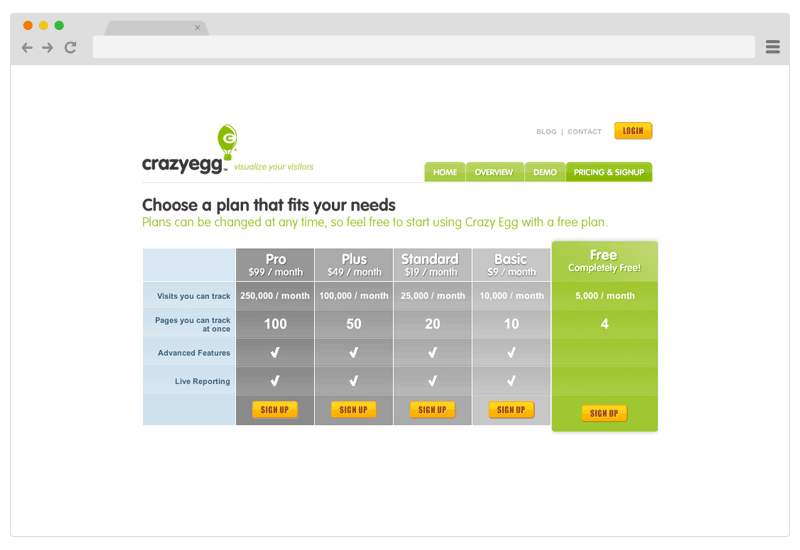
Here is how the new page, inspired by the customer feedback in the survey looked like:
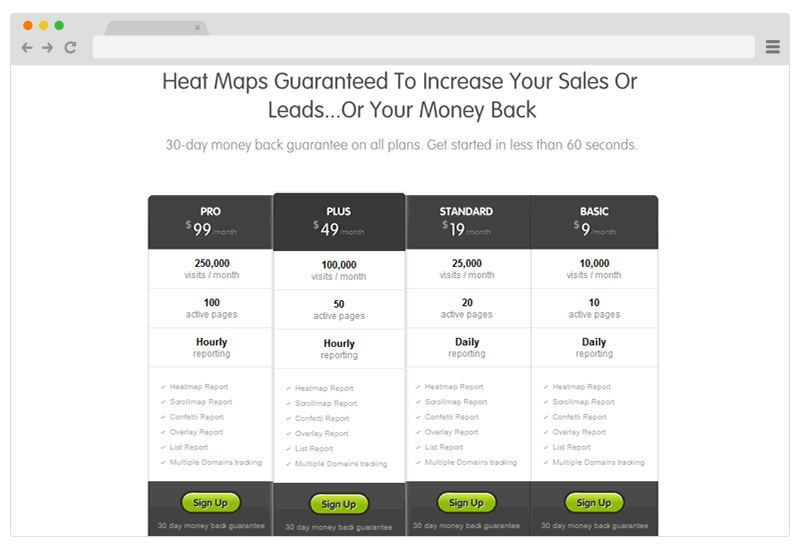
Offer An Incentive
According to a joint study by Survey Monkey, Zoomerang and Gallup polls, incentives typically boost response rates by 50% on average. By giving away a free report or other small gifts, you show respondents that you value their time and feedback.
Be careful though:
You need to ensure that your incentive is in an appropriate scope. When you offer large incentives, you risk losing out on your budget. For example, should you promise to cater for signup fees for conversion analytics application to the first 50 people, you need to ensure that less than 50 people respond to the survey or the 51st person does not see the incentive.
Additionally, for this to work, you need to offer the incentive at the appropriate time. A report showed that the promise of a $5.00 cash incentive increased response rates by 30% and actually providing the $5.00 up front increased response rates by 50%.
Avoid Loaded Questions
Sometimes you may find that you have framed questions in a way that forces a respondent to answer in a way that does not accurately reflect his or her position or situation. This major mistake could cause you to analyze or infer wrong information that would lead you to implement misinformed strategies.
Take for example an SEO company:
There are two sides of SEO. There is the site visitors’ side and the site owner’s side. The way a site owner and a site visitor will see a keyword is different. When asking questions, you sure will get different answers from either party.
A bad question:
Why do you write meta descriptions? This question is only relevant to site owners not visitors. This means that a clueless site visitor could answer the question, indirectly implying he is a site owner yet he is just a visitor.
Instead, do this:
If using survey monkey, use the skip logic. This tool allows you to ask preliminary questions and also allow people to pass over questions that do not apply to them.
Additionally:
These questions should not be leading. By this, we mean that they should not be biased or sway your respondents in a particular direction. Bias will only cloud their judgment and prevent them from portraying their true sentiments.
Don’t ask this question:
How short is our checkout page? This already forces an impression on your respondent. What if they actually thought it was long? Instead, ask them how they would describe the length of your checkout page. This will give respondents a better level ground on how to respond.
Look at this case study:
Teespring collected qualitative feedback through onsite surveys and ensured that their research was not biased to ensure that they collected honest and unbiased feedback. After their research, the company discovered that credibility was a major issue.
The fact that they only ship shirts once the minimum order size is hit had led to certain trust issues from customers. Their survey had feedback such as “not sure if I’ll get my shirt’ and “not sure if I should give my credit card information” among others.
To deal with this and generate more trust, the business had to redesign their CTA.
Final Thoughts
Generating or formulating a great sales plan and understanding your customers depend not only in your judgment as a business but also in hearing and understanding the voice of the customer.
The best way to do this is by running onsite surveys that will give you direct access to your customer’s thoughts.
Designing a survey is not a walk in the park if increasing conversion is your target end result. This is because you want to find meaningful data by asking all the questions you deem fit and getting the best and honest answers from your respondents.
But there is a catch. You need to find a balance between the two or else you will have to sacrifice on one aspect. Generally, like we have discussed, ensure that you only ask relevant questions, keep them simple and avoid loaded ones, among other tips.
After doing this, you need to monitor your conversion rates. This is easily done by installing the all-in-one analytics tool offered here at Truconversion to monitor important aspects of your business such as visitor-session recordings, heat maps and conversion funnels.
Have you tried using onsite surveys? Tell us how you did it and what the results were in the comments section below.

